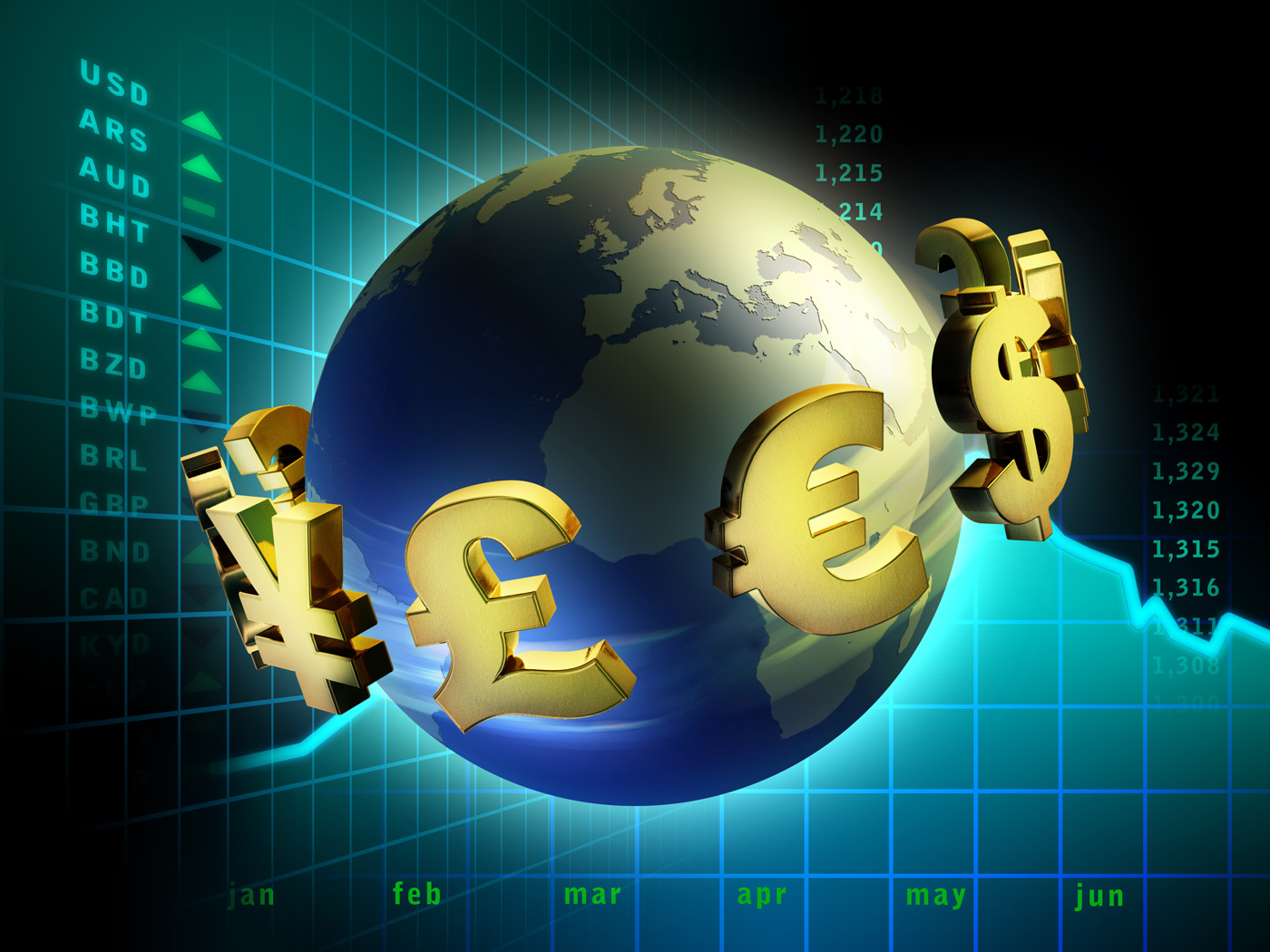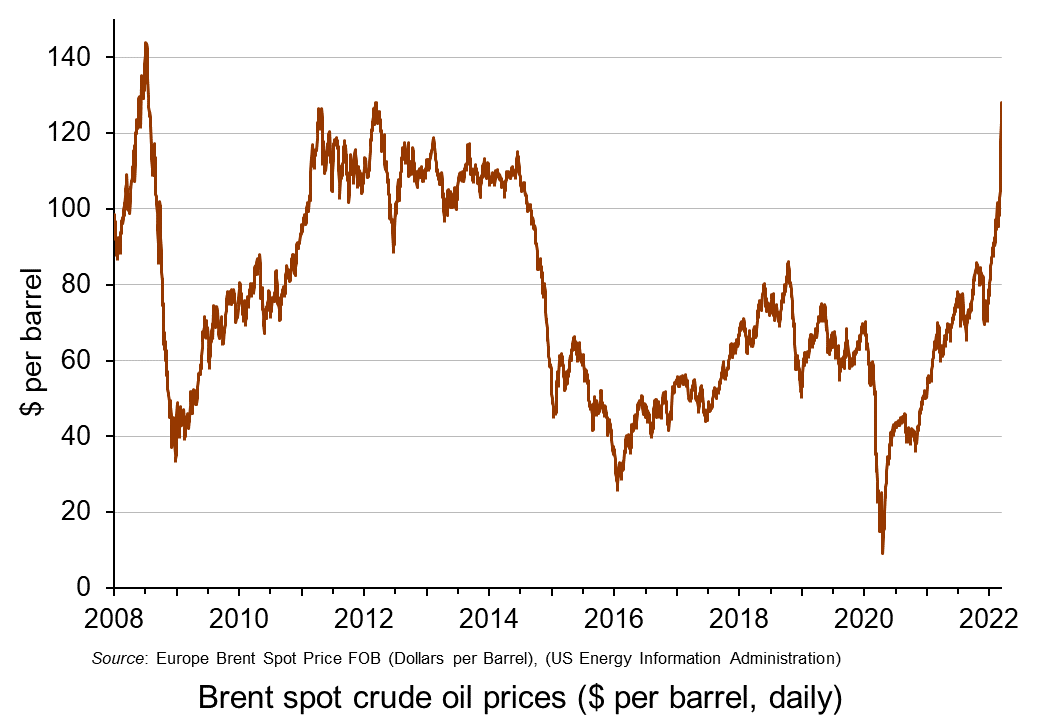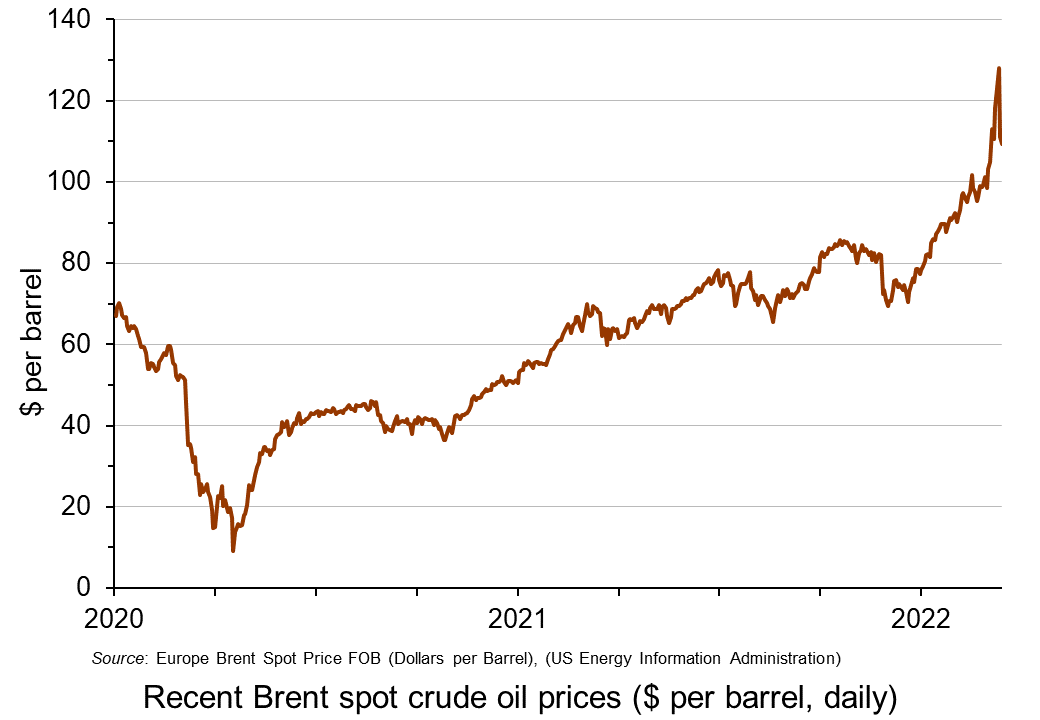Why did a competition authority change its mind on one aspect of this merger?
In January 2022, Microsoft announced its plan to acquire Activision Blizzard for $68.7 billion. Activision Blizzard is one of the largest games publishers in the world and famous for titles such as Call of Duty and World of Warcraft. Sales revenue from Call of Duty: Modern Warfare II was over $10 billion within ten days of its release in 2022. Given Microsoft’s ownership of the Xbox, one of the three devices that dominate the market for gaming consoles, the deal was always likely to raise competition concerns.
Potential competition issues
 Following Phase 1 and 2 merger investigations by the Competition and Markets Authority (CMA) a number of competition issues were raised. One particular concern was in the market for gaming consoles and the potential impact of the merger on the future availability of Call of Duty (CoD). Some of the key findings of the initial research undertaken by the CMA were that:
Following Phase 1 and 2 merger investigations by the Competition and Markets Authority (CMA) a number of competition issues were raised. One particular concern was in the market for gaming consoles and the potential impact of the merger on the future availability of Call of Duty (CoD). Some of the key findings of the initial research undertaken by the CMA were that:
- Sony’s PlayStation was a much closer rival for the Xbox than the Nintendo Switch, which tends to offer more family-orientated games.
- PlayStation users spend significant amounts of gametime playing CoD.
- Game availability is a key factor that influences console purchase decisions.
- Twenty-four percent of PlayStation users who play CoD stated that they would not purchase future versions of the console if CoD was unavailable on the platform.
These findings suggest that there are commercial incentives for Microsoft to limit the availability of CoD on the PlayStation. For example, the newly merged business could make future versions of the game exclusive to the Xbox – total exclusivity. Alternatively, it could adopt a policy of partial exclusivity. For example, it could only make versions of CoD available on the PlayStation that exclude some of its more popular features.
 There are costs to Microsoft of implementing a policy of total or partial exclusivity. For example, 76% per cent of PlayStation users who play CoD stated that they would not switch consoles if future versions of the game were made unavailable. By making CoD exclusive to Xbox users, Microsoft would lose revenue from forgoing potential sales of the game to this group of users. The firm may also suffer reputational damage if there was a social media backlash against an exclusivity decision.
There are costs to Microsoft of implementing a policy of total or partial exclusivity. For example, 76% per cent of PlayStation users who play CoD stated that they would not switch consoles if future versions of the game were made unavailable. By making CoD exclusive to Xbox users, Microsoft would lose revenue from forgoing potential sales of the game to this group of users. The firm may also suffer reputational damage if there was a social media backlash against an exclusivity decision.
However, these costs of implementing a policy of exclusivity could be outweighed by the potential benefits. These include:
- The additional sales of consoles as some users switch from the PlayStation to the Xbox to gain access to CoD.
- the sale of CoD and other games to these additional Xbox users.
To quantify these costs and benefits, the CMA used a financial model that includes information on the amounts of money users typically spend on the Xbox platform and CoD over a five-year period. This ‘lifetime value of customers’ model found that it would be profitable for Microsoft to implement a policy of exclusivity post-merger.
The CMA also noted that in the majority of cases where Microsoft had previously acquired gaming studios, the subsequent release of games had been made exclusive to the Xbox.
CMA findings
 Following its analysis of the case, the CMA published its provisional findings on the 8th February 2023. One key finding was that the merger would harm consumers, as it would lead to a substantial lessening of competition in the supply of console gaming services. The CMA argued that the acquisition should proceed only if Activision Blizzard sold off the parts of its business responsible for producing CoD. This is a structural remedy.
Following its analysis of the case, the CMA published its provisional findings on the 8th February 2023. One key finding was that the merger would harm consumers, as it would lead to a substantial lessening of competition in the supply of console gaming services. The CMA argued that the acquisition should proceed only if Activision Blizzard sold off the parts of its business responsible for producing CoD. This is a structural remedy.
Microsoft rejected these findings and argued that the financial modelling used by the CMA was based on inaccurate data. In its formal written response to the competition authority the company argued that:
- The potential gains from a policy of exclusivity had been calculated over a five-year period whereas the costs (i.e. the forgone sales of CoD) had only been calculated over a one-year period. More accurate analysis should compare both the potential gains and losses over a five-year period.
- When more recent data are used to calculate the amounts of money users typically spend on the Xbox platform and CoD over a five-year period, the figure is lower than in the original work by the CMA.
Revised CMA findings
Having adjusted its analysis to take account of these criticisms, the CMA published an update to its Provisional Findings on 24th March 2023. In this update the competition authority stated that:
The analysis now shows that it would not be commercially beneficial to Microsoft to make CoD exclusive to Xbox following the deal, but that Microsoft will instead still have the incentive to continue to make the game available on PlayStation.
Therefore, just six weeks after publishing its Provisional Findings the CMA changed its conclusion and stated that the merger would not result in a substantial lessening of competition in the market for the supply of console gaming services in the UK.
In response to these changes an ex-CMA lawyer stated that:
This is extremely unusual. Restating your provisional findings is something ‘you would rather die than do’.
It is important to remember that the investigation by the CMA also raised concerns about the impact of the acquisition on competition in the cloud gaming market. These concerns remain unaffected by these updated findings and a final report will be published by the CMA at the end of April.
Competition authorities from 16 different countries/regions are also investigating the deal, including the Federal Trade Commission in the USA and the European Commission. It will be interesting to see if these authorities agree on the potential impact of the merger on competition.
Articles
CMA documentation
Questions
- Under what circumstances could a merger result in a substantial lessening of competition?
- Summarise the thresholds that have to be met by a potential merger before it is investigated by the Competition and Markets Authority.
- Explain the direct and indirect network effects that exist in the console gaming market. To what extent do they create barriers to entry?
- Outline some different ways that Microsoft could introduce a policy of partial exclusivity for the Call of Duty franchise of games.
- What would be the impact of a policy of exclusivity on the cross price elasticity of demand between Xbox and PlayStation consoles?
- Outline the difference between behavioural and structural remedies for merger.
- Discuss why the acquisition of Activision by Microsoft might reduce competition in the cloud gaming market.
 Tickets for Beyonce’s 2023 UK Renaissance tour went on general sale via Ticketmaster’s website at 10am on Tuesday 7 February. Throughout the day, social media were full of messages from fans complaining about technical issues, long online queues and rising prices. This is not the first time this has happened. Similar complaints were made in 2022 when tickets went on sale for tours by Bruce Springsteen, Harry Styles and Taylor Swift.
Tickets for Beyonce’s 2023 UK Renaissance tour went on general sale via Ticketmaster’s website at 10am on Tuesday 7 February. Throughout the day, social media were full of messages from fans complaining about technical issues, long online queues and rising prices. This is not the first time this has happened. Similar complaints were made in 2022 when tickets went on sale for tours by Bruce Springsteen, Harry Styles and Taylor Swift.
With the general sale of tickets for Beyonce’s tour, many fans complained they were waiting in online queues of over 500 000 people. Others reported their frustration with continually receiving ‘403 error’ messages.
Market dominance
In November 2022, Ticketmaster’s website in the USA constantly crashed during the pre-sale of tickets for Taylor Swift’s tour. This led to the general sale of tickets being cancelled.
In response to the public anger that followed this decision, the Senate’s antitrust subcommittee organised a hearing with the title – ‘That’s The Ticket: Promoting Competition and Protecting Competition and Protecting Consumers in Live Entertainment.’
Senator Amy Klobuchar, the Chair of this committee, stated that
The issues within America’s ticketing industry were made painfully obvious when Ticketmaster’s website failed hundreds of thousands of fans hoping to purchase tickets for Taylor Swift’s new tour, but these problems are not new. For too long, consumers have faced long waits and website failures, and Ticketmaster’s dominant market position means the company faces inadequate pressure to innovate and improve.
Ticketmaster merged with Live Nation in 2010 to become the largest business in the primary ticket market for live music events. Some people have accused the firm of abusing its dominant market position by failing to invest enough money in its website, so leading to poor customer service.
Dynamic pricing
 Fans have also been complaining about the system of dynamic pricing that Ticketmaster now uses for big live events. What exactly is dynamic pricing?
Fans have also been complaining about the system of dynamic pricing that Ticketmaster now uses for big live events. What exactly is dynamic pricing?
Firms with market power often adjust their prices in response to changing market conditions. For example, if a business experiences significant increases in demand for its products in one quarter/year it may respond by raising prices in the following quarter/year.
With dynamic pricing, these price changes take place over much shorter time periods: i.e. within minutes. For example, in one media report, a Harry Styles fan placed £155 tickets in their basket for a concert at Wembley stadium. When the same fan then tried to purchase the tickets, Ticketmaster’s website sent a message stating that they were no longer available. However, in reality they were still available but for £386 – the price had instantly jumped because of high demand. Continually monitoring market conditions and responding to changes so quickly requires the use of specialist software and sophisticated algorithms.
Arguments for dynamic pricing
With ticket sales taking place months/years in advance of most live events, it is difficult for artists/promotors to predict future levels of demand. Given this uncertainty and the importance for the artist of playing in front of a full venue, event organisers may err on the side of caution when pricing tickets.
If the demand for tickets proves to be much stronger than initially forecast, then resellers in the secondary market can take advantage of the situation and make significant amounts of money. Dynamic pricing enables sellers in the primary market, such as Ticketmaster, to adjust to market conditions and so limits the opportunities of resale for a profit.
Ticketmaster argues that without dynamic pricing, artists will miss out on large amounts of revenue that will go to re-sellers instead. A spokesperson for the company stated that
Over the past few years, artists have lost money to resellers who have no investment in the event going well. As such event organisers have looked to market-based pricing to recapture that lost revenue.
Critics have claimed that Ticketmaster’s use of dynamic pricing is simply an example of price gouging.
No doubt the controversy over the sale of tickets for live music events will continue in the future.
Articles
- Beyoncé tour: UK fans snap up tickets despite Ticketmaster glitches
BBC News, Ian Youngs (7/2/23)
- Beyoncé Fans Are Going to Extreme Lengths to Secure Renaissance Tour Tickets
Time, Mariah Espada (10/2/23)
- Live music: How buying concert tickets could be made better
BBC News, Mark Savage (26/1/23)
- Ticketmaster demand-based pricing system criticised
BBC News, Annabel Rackham (10/10/22)
- Did Ticketmaster’s Market Dominance Fuel the Chaos for Swifties?
Yale Insights, Florian Ederer (23/11/22)
 Taylor Swift ticket sale problems spark widespread criticism of Ticketmaster
Taylor Swift ticket sale problems spark widespread criticism of TicketmasterPBS NewsHour on YouTube, Diana Moss and John Yang (17/11/22)
- Springsteen tickets are going for a whopping $4,000 – what else are we paying dynamic prices for?
The Guardian, Arwa Mahdawi (27/7/22)
- Will the Taylor Swift-Ticketmaster Senate Hearing Actually Change Anything?
Variety, Dean Budnick (1/2/23)
- Beyonce fans scramble for Renaissance tickets as sellers warn availability is already ‘extremely limited’
Sky News, Bethany Minelle (3/2/23)
Questions
- Explain the difference between the primary and secondary market for ticket sales for live events.
- Draw a demand and supply diagram to illustrate the primary market for tickets. Using this diagram explain how below market clearing prices in the primary market enable re-sellers to make money in the secondary market.
- What are the limitations of using demand and supply diagrams to analyse the primary market for tickets?
- Who has the greater market power – Ticketmaster or artists such as Taylor Swift and Beyonce?
- Try to provide a precise definition of the term ‘price gouging’.
- What other sectors commonly use dynamic pricing?
 The emergence of the digital economy has brought about increased competition across a wide range of products and services. The digital economy has provided businesses with the opportunity to produce new categories of goods and services with the aid of artificial intelligence. This new digital era has also been beneficial for consumers who now have greater choice and access to often higher-quality products at lower prices.
The emergence of the digital economy has brought about increased competition across a wide range of products and services. The digital economy has provided businesses with the opportunity to produce new categories of goods and services with the aid of artificial intelligence. This new digital era has also been beneficial for consumers who now have greater choice and access to often higher-quality products at lower prices.
But while the digital revolution has facilitated greater competition, it also presents some challenges for competition law enforcement. Competition agencies continue to intensify their scrutiny of the digital economy as they try to get to grips with both the opportunities and challenges.
The role of regulation
Many agencies are aware that regulatory overreach could have negative effects on the development of digital markets. Therefore, any competition enforcement in this area needs to be evidenced-based.
A number of agencies have commissioned market studies or appointed experts in the digital field to prepare industry reports. While many of these reports and studies have found that existing competition rules generally continue to provide a solid basis for protecting competition in the digital age, there is growing demand for various changes to regulation. The reports have generally noted that the traditional tools for competition analysis may require some adaptation or refinement to address better the specificities of online markets, such as the multisided nature of platforms, network effects, zero-price markets, ‘big data’ and the increased use of algorithms.
 Tech giants and online platforms, in particular, have been a focus of recent intervention by competition authorities. Investigations and intervention have related to a range of practices, including self-preferencing in the ranking of search results, the bundling of apps (and other alleged anti-competitive leveraging strategies), the collection, usage and sharing of data, and the setting of access conditions to mobile ecosystems and app stores.
Tech giants and online platforms, in particular, have been a focus of recent intervention by competition authorities. Investigations and intervention have related to a range of practices, including self-preferencing in the ranking of search results, the bundling of apps (and other alleged anti-competitive leveraging strategies), the collection, usage and sharing of data, and the setting of access conditions to mobile ecosystems and app stores.
The duration and complexity of these investigations have been met with concerns that competition authorities are not sufficiently equipped to protect competition in fast-moving digital markets. These concerns have been amplified by the growth in size and importance of online platforms, their significant economies of scale and network effects, and the risk that market power in digital markets can become quickly entrenched.
In addition to the commissioned reports, some agencies have established or appointed specialist digital markets units or officers. The aim of such units is to develop expertise and regulation to deal with fast-paced digital markets. In Europe, The Digital Markets Act (DMA) was adopted by the EU in response to these concerns to establish a uniform ex-ante regulatory regime to make digital markets fairer and more competitive, and to prevent a fragmentation of the EU’s internal market.
A recent case concerns Apple. Because of the Digital Markets Act, Apple has been required to allow app store competitors onto its products. This will come into effect in 2024.
UK policy
In the UK, the government has been concerned that ‘the unprecedented concentration of power amongst a small number of digital firms is holding back innovation and growth’. UK competition rules are thus set to change significantly, with the government setting out the framework for an entirely new ‘pro-competition regime’ for digital markets. As it states in the Executive Summary to its proposals for such a regime (see linked UK official publication below):
The size and presence of ‘big’ digital firms is not inherently bad. Nonetheless, there is growing evidence that the particular features of some digital markets can cause them to ‘tip’ in favour of one or two incumbents… This market power can become entrenched, leading to higher prices, barriers to entry for entrepreneurs, less innovation, and less choice and control for consumers.
It has established a new Digital Markets Unit (DMU) within the Competition and Markets Authority (CMA). It was launched in ‘shadow form’ in April 2021, pending the introduction of the UK’s new digital regulatory regime. Under the proposals, the new regime will focus on companies that the DMU designates as having ‘strategic market status’.
The government is expected to publish its much-awaited Digital Markets, Competition and Consumer Bill, which, according to legal experts, will represent the most significant reform of UK competition and consumer protection laws in years.
It is expected that the Bill will result in important reforms for competition law, but it is also expected to give the DMU powers to enforce a new regulatory regime. This new regime will apply to UK digital firms that have ‘strategic market status’ (SMS). This will be similar to the EU’s Digital Markets Act in how it applies to certain ‘gatekeeper’ digital firms. However, the UK regulations are intended to be more nuanced than the EU regime in terms of how SMS firms are designated and the specific obligations they will have to comply with.
 A report by MPs on the influential Business, Energy and Industrial Strategy Committee published in October, urged the Government to publish a draft Digital Markets Bill that would help deter predatory practices by big tech firms ‘without delay’.
A report by MPs on the influential Business, Energy and Industrial Strategy Committee published in October, urged the Government to publish a draft Digital Markets Bill that would help deter predatory practices by big tech firms ‘without delay’.
On 17th November 2022, the UK Government announced in its Autumn Statement 2022 that it will bring forward the Bill in the third Parliamentary session. There has been no specific date announced yet for the first reading of the Bill, but it will probably be in Spring 2023. Current expectations are that the new DMU regime and reforms to competition and consumer protection laws could be effective as early as October 2023.
Proposals for the Bill were trailed by the Government in the Queen’s Speech. It announced measures that would empower the Competition and Markets Authority’s (CMA) Digital Markets Unit (DMU) to rein in abusive tech giants by dropping the turnover threshold for immunity from financial penalties from £50 million to £20 million and hiking potential maximum fines to 10% of global annual income. Jeremy Hunt, the Chancellor of the Exchequer, said that the Bill, once enacted, would ‘tackle anti-competitive practice in digital markets’ and provide consumers with higher quality products and greater choice. The strategy includes tailored codes of conduct for certain digital companies and a bespoke merger control regime for designated firms.
The Bill is also expected to include a wide range of reforms to the competition and consumer law regimes in the UK, in particular:
- wide-ranging changes to the CMA’s Competition Act 1998 and market study/investigation powers, including significant penalties for non-compliance with market investigation orders;
- significant strengthening of the consumer law enforcement regime by enabling the CMA directly to enforce consumer law through the imposition of fines;
- changes to UK consumer laws to tackle subscription traps and fake reviews and to enhance protections for savings schemes.
Competition law expert Alan Davis of Pinsent Masons said:
Importantly, the Bill will bring about major reforms to consumer protection law, substantially strengthening the CMA’s enforcement powers to mirror those it already uses in antitrust cases, as well as important changes to merger control and competition rules.
It is anticipated that the Bill will announce the most significant reforms of UK competition and consumer protection laws in years and is expected to have an impact on all business in the UK to varying degrees. It is advised, therefore, that businesses need to review their approach to sales and marketing given the expected new powers of the CMA to impose significant fines in relation to consumer law breaches.
Conclusions
Technological innovation is largely pro-competitive. However, competition rules must be flexible and robust enough to deal with the challenges of the online world. A globally co-ordinated approach to the challenges raised in competition law by the digital age remains important wherever possible. Under the EU’s Digital Markets Act, firms that are designated as gatekeepers, and those defined as having strategic market status under the UK regime, will be required to undertake significant work to ensure compliance with the new rules.
Articles
UK official publications
Questions
- For what reasons may digital markets be more competitive than traditional ones?
- What types of anti-competitive behaviour are likely in digital markets?
- Explain what are meant by ‘network economies’? What are their implications for competition and market power?
- Explain what is meant by ‘bundling’? How is this likely to occur in digital markets?
- Give some examples where traditional markets are combined with online ones. Does this make it difficult to pursue an effective competition policy?
- Give some examples of ways in which firms can mislead or otherwise take advantage of consumers in an e-commerce environment.
 Global oil prices (Brent crude) reached $128 per barrel on 9 March, a level not seen for 10 years and surpassed only in the run up to the financial crisis in 2008. Oil prices are determined by global demand and supply, and the current surge in prices is no exception.
Global oil prices (Brent crude) reached $128 per barrel on 9 March, a level not seen for 10 years and surpassed only in the run up to the financial crisis in 2008. Oil prices are determined by global demand and supply, and the current surge in prices is no exception.
A rise in demand and/or a fall in supply will lead to a rise in the price. Given that both demand and supply are relatively price inelastic, such shifts can cause large rises in oil prices. Similarly, a fall in demand or rise in supply can lead to a large fall in oil prices.
These changes are then amplified by speculation. Traders try to get ahead of price changes. If people anticipate that oil prices will rise, they will buy now, or make a contract to buy more in the future at prices quoted today by buying on the oil futures market. This then pushes up both spot (current) prices and futures prices. If demand or supply conditions change, speculation will amplify the reaction to such a change.
What has happened since 2019?
 In 2019, oil was typically trading at around $60 to $70 per barrel. It then fell dramatically in early 2020 as the onset of COVID-19 led to a collapse in demand, for both transport and industry. The price fell below $20 in late April (see charts: click here for a PowerPoint).
In 2019, oil was typically trading at around $60 to $70 per barrel. It then fell dramatically in early 2020 as the onset of COVID-19 led to a collapse in demand, for both transport and industry. The price fell below $20 in late April (see charts: click here for a PowerPoint).
Oil prices then rose rapidly as demand recovered somewhat but supply chains, especially shipping, were suffering disruptions. By mid-2021, oil was once more trading at around $60 to $70 per barrel. But then demand grew more strongly as economic recovery from COVID accelerated. But supply could not grow so quickly. By January 2022, Brent crude had risen above $80 per barrel.
 Then worries began to grow about Russian intentions over Ukraine as Russia embarked on large-scale military exercises close to the border with Ukraine. People increasingly disbelieved Russia’s declarations that it had no intention to invade. Russia is the world’s second biggest producer of oil and people feared that deliberate disruptions to supply by Russia or other countries banning imports of Russian oil would cause supply shortages. Speculation thus drove up the oil price. By 23 February, the day before the Russian invasion of Ukraine, Brent crude had risen to $95.
Then worries began to grow about Russian intentions over Ukraine as Russia embarked on large-scale military exercises close to the border with Ukraine. People increasingly disbelieved Russia’s declarations that it had no intention to invade. Russia is the world’s second biggest producer of oil and people feared that deliberate disruptions to supply by Russia or other countries banning imports of Russian oil would cause supply shortages. Speculation thus drove up the oil price. By 23 February, the day before the Russian invasion of Ukraine, Brent crude had risen to $95.
With the Russian invasion, moves were made by the EU the USA and other countries to ban or limit the purchase of Russian oil. This increased the demand for non-Russian oil.
 On 8 March, the USA announced that it was banning the import of Russian oil with immediate effect. The same day, the UK announced that it would phase out the import of Russian oil and oil products by the end of 2022.
On 8 March, the USA announced that it was banning the import of Russian oil with immediate effect. The same day, the UK announced that it would phase out the import of Russian oil and oil products by the end of 2022.
The EU is much more dependent on Russian oil imports, which account for around 27% of EU oil consumption and 2/3 of extra-EU oil imports. Nevertheless, it announced that it would accelerate the move away from Russian oil and gas and towards green alternatives. By 8 March, Brent crude had risen to $128 per barrel.
The question was then whether other sources of supply would help to fill the gap. Initially it seemed that OPEC+ (excluding Russia) would not increase production beyond the quotas previously agreed by the cartel to meet recovery in world demand. But then, on 9 March, the UAE Ambassador to Washington announced that the county favoured production increases and would encourage other OPEC members to follow suit. With the announcement, the oil price fell by 11% to £111. But the next day, it rose again somewhat as the UAE seemed to backtrack, but then fell back slightly as OPEC said there was no shortage of oil.
This is obviously an unfolding story with the suffering of the Ukrainian people at its heart. But the concepts of supply and demand and their price elasticity and the role of speculation are central to understanding what will happen to oil prices in the coming months with all the consequences for poverty and economic hardship.
Articles
Data
Questions
- Use a demand and supply diagram to illustrate what has happened to oil prices over the past two years. How has the size of the effects been dependent on the price elasticity of demand for oil and the price elasticity of supply of oil?
- Use a demand and supply diagram to show what has been happening to the price of natural gas over the past two years. Are the determinants similar to those in the oil market? How do they differ (if at all)?
- What policy options are open to governments to deal with soaring energy prices?
- What are the distributional consequences of the rise in energy prices? (see the blog: Rise in the cost of living.)
- Under what circumstances are oil prices over the next six months likely (a) fall; (b) continue rising?
 Competition authorities across the globe have recently been paying close attention to the activity of large firms in high-tech markets, in particular Google, Amazon, Facebook and Apple. One estimate suggests that 30 cases have been opened by the authorities since 2010, and a third of these were launched in 2020.
Competition authorities across the globe have recently been paying close attention to the activity of large firms in high-tech markets, in particular Google, Amazon, Facebook and Apple. One estimate suggests that 30 cases have been opened by the authorities since 2010, and a third of these were launched in 2020.
One of the most prominent recent cases in the US courts concerns a complaint made by Epic Games, producer of the popular Fortnite game, against Apple. The background to the case is Apple’s standard practice on its App Store of taking a 30% cut of all paid app and in-app purchases. Therefore, a Fortnite player purchasing $10 worth of in-game currency would result in $7 for Epic and $3 for Apple.
However, in August 2020 Epic decided, contrary to Apple’s terms and conditions, to offer players an alternative way to purchase in-game currency. Gamers would see a choice screen giving them the option to buy currency through the Apple App Store or to buy it directly from Epic. Crucially, purchasing directly from Epic would be cheaper. For example, the same $10 worth of in-game currency on the App Store would cost only $8 if purchased directly from Epic.
It is clear to see why Epic was in favour of direct payments – it earns revenue of $8 instead of $7. However, note that the benefits for gamers are even larger – they save $2 by buying directly. In other words, Epic is passing on 2/3 of the cost saving to consumers.
Apple very quickly responded to Epic’s introduction of the direct purchase alternative by removing Fortnite from the App Store. Epic then filed a complaint with the US District Court.
The Epic v Apple court case
The case concerned Apple restricting game developers’ ability to promote purchasing mechanisms outside the App Store. However, more broadly, it also examined Apple’s complete control of the iOS app market since all apps must be distributed through the Apple App Store. Epic had previously disrupted PC games distribution by launching its own platform with lower fees. The setup of iOS and Apple’s actions against Epic make this an impossible way to reach users.
 The Court’s analysis of the Epic v Apple case depended upon several key factors. First, the market definition. To be found to have breached competition law Apple must have a significant share of the market. If the market is defined as that for iOS apps, this is clearly the case. However, if, as Apple argues, it is broader, encompassing the options to play Epic games through web browsers, gaming consoles and PCs, then this is not the case.
The Court’s analysis of the Epic v Apple case depended upon several key factors. First, the market definition. To be found to have breached competition law Apple must have a significant share of the market. If the market is defined as that for iOS apps, this is clearly the case. However, if, as Apple argues, it is broader, encompassing the options to play Epic games through web browsers, gaming consoles and PCs, then this is not the case.
Second, even if the market is narrowly defined, Apple argues that its control of the app distribution market is essential to provide user friendly and secure provision of apps. Furthermore, revenue extracted from app producers can enable more investment in the iOS. Without Apple controlling the market, app producers would be able to free-ride on the visibility the App Store provides for their apps.
The ruling
The US Court announced its ruling on 10 September 2021. The judge decided that the market was broader than just iOS and thus Apple is not considered to be a monopolist. This has been touted as a major success for Apple, as it will allow the company to maintain its control of the app distribution market. However, the Court also ruled that Apple must allow game developers to link and direct users to alternative purchasing methods outside the App Store.
The Court’s decision in the Epic v Apple case closely follows concessions recently made by Apple for so called ‘reader apps’ such as Spotify and Netflix. Following an investigation by the Japanese authorities, these concessions allowed such apps to promote and receive purchases directly from consumers as long as they were made outside the app. These apps could be treated differently, as digital goods are consumed on multiple devices. However, the decision in the Epic case now extends such concessions to gaming apps.
It is unclear whether Apple will appeal the decision in the case Epic brought. If not, Apple stands to lose considerable revenue from its 30% share of in-app purchases. It will be very interesting to see how this ruling affects how Apple runs the App Store. Epic, on the other hand, has already made clear it will appeal the decision, aiming to prevent Apple gaining a share of any payment users make outside the app.
Matt Olczak and Jon Guest
Articles
Questions
- Why might a firm involved in a competition case, such as Apple, try to convince the authorities to define the relevant market as broadly as possible?
- Using the example of the Epic v Apple case, explain how Apple’s actions could be seen as both exclusionary and exploitative abuses of a dominant position.
 Following Phase 1 and 2 merger investigations by the Competition and Markets Authority (CMA) a number of competition issues were raised. One particular concern was in the market for gaming consoles and the potential impact of the merger on the future availability of Call of Duty (CoD). Some of the key findings of the initial research undertaken by the CMA were that:
Following Phase 1 and 2 merger investigations by the Competition and Markets Authority (CMA) a number of competition issues were raised. One particular concern was in the market for gaming consoles and the potential impact of the merger on the future availability of Call of Duty (CoD). Some of the key findings of the initial research undertaken by the CMA were that: There are costs to Microsoft of implementing a policy of total or partial exclusivity. For example, 76% per cent of PlayStation users who play CoD stated that they would not switch consoles if future versions of the game were made unavailable. By making CoD exclusive to Xbox users, Microsoft would lose revenue from forgoing potential sales of the game to this group of users. The firm may also suffer reputational damage if there was a social media backlash against an exclusivity decision.
There are costs to Microsoft of implementing a policy of total or partial exclusivity. For example, 76% per cent of PlayStation users who play CoD stated that they would not switch consoles if future versions of the game were made unavailable. By making CoD exclusive to Xbox users, Microsoft would lose revenue from forgoing potential sales of the game to this group of users. The firm may also suffer reputational damage if there was a social media backlash against an exclusivity decision. Following its analysis of the case, the CMA published its provisional findings on the 8th February 2023. One key finding was that the merger would harm consumers, as it would lead to a substantial lessening of competition in the supply of console gaming services. The CMA argued that the acquisition should proceed only if Activision Blizzard sold off the parts of its business responsible for producing CoD. This is a structural remedy.
Following its analysis of the case, the CMA published its provisional findings on the 8th February 2023. One key finding was that the merger would harm consumers, as it would lead to a substantial lessening of competition in the supply of console gaming services. The CMA argued that the acquisition should proceed only if Activision Blizzard sold off the parts of its business responsible for producing CoD. This is a structural remedy. Tickets for Beyonce’s 2023 UK Renaissance tour went on general sale via Ticketmaster’s website at 10am on Tuesday 7 February. Throughout the day, social media were full of messages from fans complaining about technical issues, long online queues and rising prices. This is not the first time this has happened. Similar complaints were made in 2022 when tickets went on sale for tours by Bruce Springsteen, Harry Styles and Taylor Swift.
Tickets for Beyonce’s 2023 UK Renaissance tour went on general sale via Ticketmaster’s website at 10am on Tuesday 7 February. Throughout the day, social media were full of messages from fans complaining about technical issues, long online queues and rising prices. This is not the first time this has happened. Similar complaints were made in 2022 when tickets went on sale for tours by Bruce Springsteen, Harry Styles and Taylor Swift. Fans have also been complaining about the system of dynamic pricing that Ticketmaster now uses for big live events. What exactly is dynamic pricing?
Fans have also been complaining about the system of dynamic pricing that Ticketmaster now uses for big live events. What exactly is dynamic pricing?
 The emergence of the
The emergence of the  Tech giants and online platforms, in particular, have been a focus of recent intervention by competition authorities. Investigations and intervention have related to a range of practices, including self-preferencing in the ranking of search results, the bundling of apps (and other alleged anti-competitive leveraging strategies), the collection, usage and sharing of data, and the setting of access conditions to mobile ecosystems and app stores.
Tech giants and online platforms, in particular, have been a focus of recent intervention by competition authorities. Investigations and intervention have related to a range of practices, including self-preferencing in the ranking of search results, the bundling of apps (and other alleged anti-competitive leveraging strategies), the collection, usage and sharing of data, and the setting of access conditions to mobile ecosystems and app stores.  A report by MPs on the influential Business, Energy and Industrial Strategy Committee published in October, urged the Government to publish a draft Digital Markets Bill that would help deter predatory practices by big tech firms ‘without delay’.
A report by MPs on the influential Business, Energy and Industrial Strategy Committee published in October, urged the Government to publish a draft Digital Markets Bill that would help deter predatory practices by big tech firms ‘without delay’. Global oil prices (Brent crude) reached $128 per barrel on 9 March, a level not seen for 10 years and surpassed only in the run up to the financial crisis in 2008. Oil prices are determined by global demand and supply, and the current surge in prices is no exception.
Global oil prices (Brent crude) reached $128 per barrel on 9 March, a level not seen for 10 years and surpassed only in the run up to the financial crisis in 2008. Oil prices are determined by global demand and supply, and the current surge in prices is no exception. In 2019, oil was typically trading at around $60 to $70 per barrel. It then fell dramatically in early 2020 as the onset of COVID-19 led to a collapse in demand, for both transport and industry. The price fell below $20 in late April (see charts: click
In 2019, oil was typically trading at around $60 to $70 per barrel. It then fell dramatically in early 2020 as the onset of COVID-19 led to a collapse in demand, for both transport and industry. The price fell below $20 in late April (see charts: click  Then worries began to grow about Russian intentions over Ukraine as Russia embarked on large-scale military exercises close to the border with Ukraine. People increasingly disbelieved Russia’s declarations that it had no intention to invade. Russia is the world’s second biggest producer of oil and people feared that deliberate disruptions to supply by Russia or other countries banning imports of Russian oil would cause supply shortages. Speculation thus drove up the oil price. By 23 February, the day before the Russian invasion of Ukraine, Brent crude had risen to $95.
Then worries began to grow about Russian intentions over Ukraine as Russia embarked on large-scale military exercises close to the border with Ukraine. People increasingly disbelieved Russia’s declarations that it had no intention to invade. Russia is the world’s second biggest producer of oil and people feared that deliberate disruptions to supply by Russia or other countries banning imports of Russian oil would cause supply shortages. Speculation thus drove up the oil price. By 23 February, the day before the Russian invasion of Ukraine, Brent crude had risen to $95. On 8 March, the USA announced that it was banning the import of Russian oil with immediate effect. The same day, the UK announced that it would phase out the import of Russian oil and oil products by the end of 2022.
On 8 March, the USA announced that it was banning the import of Russian oil with immediate effect. The same day, the UK announced that it would phase out the import of Russian oil and oil products by the end of 2022.  Competition authorities across the globe have recently been paying close attention to the activity of large firms in high-tech markets, in particular Google, Amazon, Facebook and Apple. One estimate suggests that 30 cases have been opened by the authorities since 2010, and a third of these were launched in 2020.
Competition authorities across the globe have recently been paying close attention to the activity of large firms in high-tech markets, in particular Google, Amazon, Facebook and Apple. One estimate suggests that 30 cases have been opened by the authorities since 2010, and a third of these were launched in 2020.  The Court’s analysis of the Epic v Apple case depended upon several key factors. First, the market definition. To be found to have breached competition law Apple must have a significant share of the market. If the market is defined as that for iOS apps, this is clearly the case. However, if, as Apple argues, it is broader, encompassing the options to play Epic games through web browsers, gaming consoles and PCs, then this is not the case.
The Court’s analysis of the Epic v Apple case depended upon several key factors. First, the market definition. To be found to have breached competition law Apple must have a significant share of the market. If the market is defined as that for iOS apps, this is clearly the case. However, if, as Apple argues, it is broader, encompassing the options to play Epic games through web browsers, gaming consoles and PCs, then this is not the case.